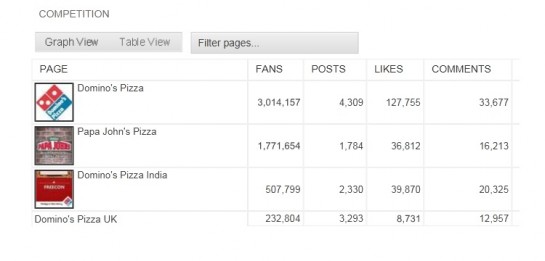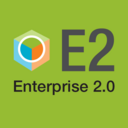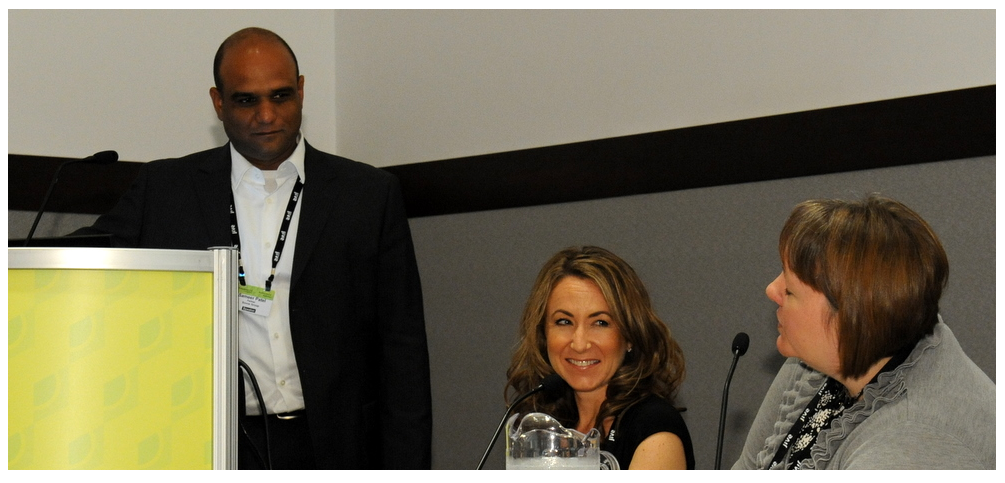While most Facebook ads are lucky to get a 0.050% CTR, we've observed Sponsored Stories get as high as 0.400% which equates to 18 cents fans.
There are two types of Sponsored Stories for Facebook pages:
- A Sponsored Like (Page Like Story) which targets friends of your fans.
- A Sponsored Post (Page Post Story), which shows messages to existing fans.
 If you have merged your page and place together or just a place page, you'll have an addition option of a Sponsored Check-In (Check-In Story) will show activity at your location.
If you have merged your page and place together or just a place page, you'll have an addition option of a Sponsored Check-In (Check-In Story) will show activity at your location.
So how are Sponsored Stories different than standard Facebook Ads? We recently ran a Sponsored Like ad campaign for Gordmans. It's highly targeted against the regions where they have their 68 retail locations, a female demographic, and interest terms for bargain hunting. The Gordmans brand motto of "Something Unexpected" resonates well with this audience. Incidentally, targeting fans of JC Penney, Kohls, and other competing department stores fared better than standard marketplace ads, but not as well as the one shown here.
 DECONSTRUCTING THE NUMBERS
DECONSTRUCTING THE NUMBERS
This campaign drove a 0.400% CTR on the first day, which fell by 45% within 48 hours to 0.220%. Ironically, the cost per click decreased over that time period, going from 26 cents to 15 cents. Therefore the eCPM (what we pay per 1,000 times we show the ad) went from over a dollar at the start to 33 cents at the end.
Two days in, this ad drove 515 clicks for $76 and gained 418 new fans. That works out to 18 cents per fan and a click-to-conversion rate of 81%. Most brands are getting fans at between $2 and $10, the former via self-serve and the latter via premium ads. Thus, 18 cents for a new fan-- a person giving your brand permission to talk to them— is a great cost of acquisition.

The fall-off in CTR is common with all Facebook advertising. Ads burn out quickly because of the frequency people check Facebook, the lack of frequency capping (Facebook is well aware of this), and advertisers who follow the "set it and forget it" model of traditional paid search.
WHY DOES THIS PERFORM SO WELL?
The Sponsored Like is a relatively new ad unit, so consumers are getting used to the novelty. There are more curiosity clicks, as with any new ad type. The Sponsored Likes and Posts are also featured by themselves on a page, or if there are regular ads on the page, shown above those. Thus, higher placement also contributes to the higher CTR. Facebook doesn't yet report on average position, so we can only speculate on the position as it relates to CTR.
TAKE AWAYS
Net net, the key to success with Facebook advertising has been leveraging the endorsement of your existing fans. People are far more likely to click on events that are associated with what their friends are doing, as we demonstrated in earlier research. Expect more ad products from Facebook that leverage the social graph— making ads more like welcome messages from friends that interruptive, irrelevant spam.
Check out
more stories from our customers and see what they’re doing with social marketing!

 Your Facebook lead should be a brand strategist, not a geek: Yes, there are technical components, but the heart of Facebook strategy is connecting to what your brand represents in the real world. What is it that gets your real world fans excited? Why do they go with you versus a competitor? How do you amplify this message so that you equip your brand advocates to spread the word? Don’t hire a fresh college grad to manage your Facebook in isolation and treat your wall like a complaints board. Take a higher level view that is an extension of the brand message you have in other marketing channels. It takes a senior leader to bring folks together.
Your Facebook lead should be a brand strategist, not a geek: Yes, there are technical components, but the heart of Facebook strategy is connecting to what your brand represents in the real world. What is it that gets your real world fans excited? Why do they go with you versus a competitor? How do you amplify this message so that you equip your brand advocates to spread the word? Don’t hire a fresh college grad to manage your Facebook in isolation and treat your wall like a complaints board. Take a higher level view that is an extension of the brand message you have in other marketing channels. It takes a senior leader to bring folks together.
 The past few weeks have been quite the whirlwind of activity. My
The past few weeks have been quite the whirlwind of activity. My  In today's networked economy, customers and prospects come armed with deep insight about your products and service levels well before they are ready to buy. Whether engaging with buyers who have similar interests on Twitter, or perusing third party or branded communities, knowledge about you and your products is widely available from other customers. So they expect timely and knowledgeable insight and service, to continue to do business with you or to become new customers.
To respond to this new reality, organizations require tighter connections between those on the front lines (sales, marketing, support) and those designing, building and supplying products behind the proverbial firewall.
In today's networked economy, customers and prospects come armed with deep insight about your products and service levels well before they are ready to buy. Whether engaging with buyers who have similar interests on Twitter, or perusing third party or branded communities, knowledge about you and your products is widely available from other customers. So they expect timely and knowledgeable insight and service, to continue to do business with you or to become new customers.
To respond to this new reality, organizations require tighter connections between those on the front lines (sales, marketing, support) and those designing, building and supplying products behind the proverbial firewall.
 Last week at
Last week at  If you have merged your page and place together or just a place page, you'll have an addition option of a Sponsored Check-In (Check-In Story) will show activity at your location.
If you have merged your page and place together or just a place page, you'll have an addition option of a Sponsored Check-In (Check-In Story) will show activity at your location. DECONSTRUCTING THE NUMBERS
This campaign drove a 0.400% CTR on the first day, which fell by 45% within 48 hours to 0.220%. Ironically, the cost per click decreased over that time period, going from 26 cents to 15 cents. Therefore the eCPM (what we pay per 1,000 times we show the ad) went from over a dollar at the start to 33 cents at the end.
Two days in, this ad drove 515 clicks for $76 and gained 418 new fans. That works out to 18 cents per fan and a click-to-conversion rate of 81%. Most brands are getting fans at between $2 and $10, the former via self-serve and the latter via premium ads. Thus, 18 cents for a new fan-- a person giving your brand permission to talk to them— is a great cost of acquisition.
DECONSTRUCTING THE NUMBERS
This campaign drove a 0.400% CTR on the first day, which fell by 45% within 48 hours to 0.220%. Ironically, the cost per click decreased over that time period, going from 26 cents to 15 cents. Therefore the eCPM (what we pay per 1,000 times we show the ad) went from over a dollar at the start to 33 cents at the end.
Two days in, this ad drove 515 clicks for $76 and gained 418 new fans. That works out to 18 cents per fan and a click-to-conversion rate of 81%. Most brands are getting fans at between $2 and $10, the former via self-serve and the latter via premium ads. Thus, 18 cents for a new fan-- a person giving your brand permission to talk to them— is a great cost of acquisition.
